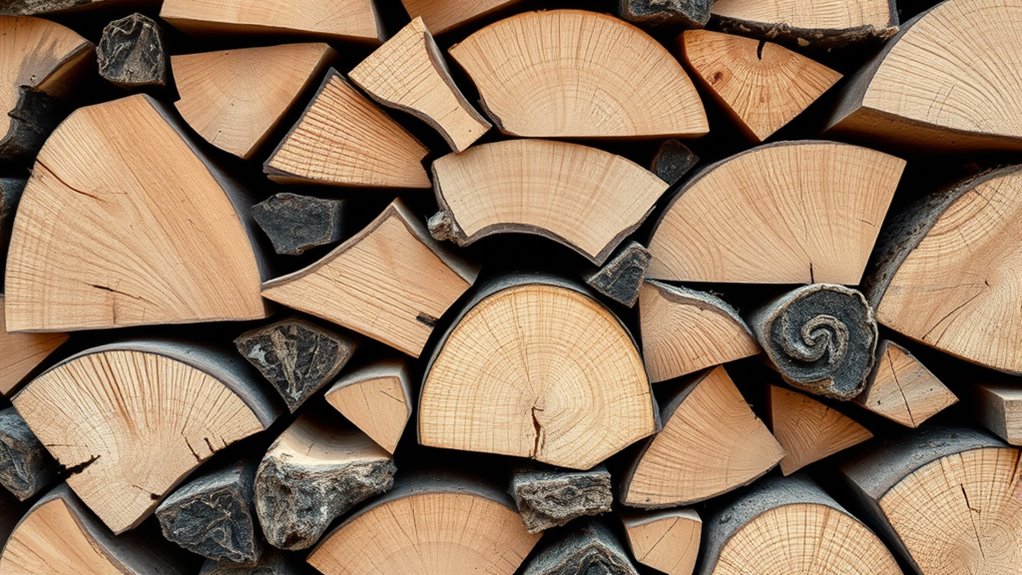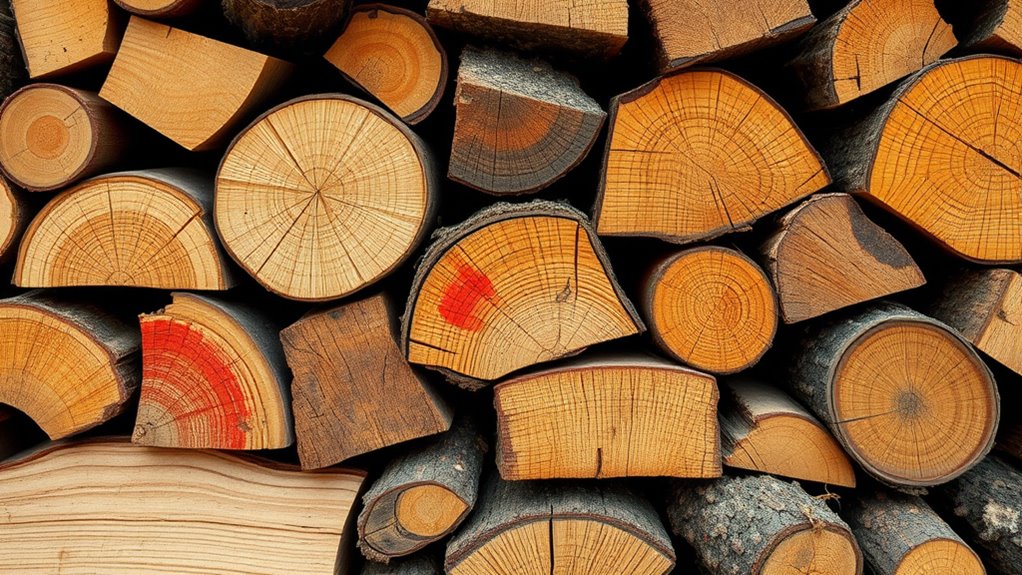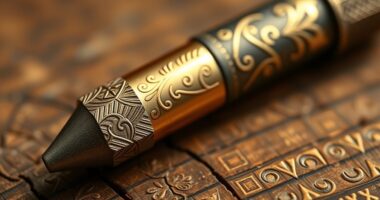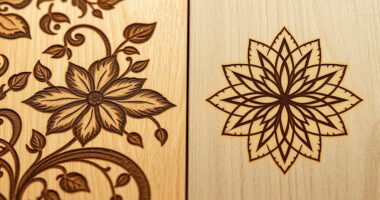To guarantee safe and effective burning, avoid species known for releasing toxic fumes, such as treated, painted, stained, or chemically-treated wood. Steer clear of harmful natural woods like yew or oleander, which are toxic when burned. Also, resin-rich softwoods like pine, cedar, and spruce produce more creosote and pollutants. Choosing the right, well-seasoned, and non-toxic wood will protect your health and chimney. Keep exploring to learn more about selecting safe and quality firewood.
Key Takeaways
- Avoid burning treated, painted, or stained wood due to toxic chemical emissions.
- Refrain from using woods like yew, oleander, or other known toxic species.
- Recognize resin-rich softwoods (pine, cedar, spruce) increase creosote and toxic fumes.
- Confirm wood species to ensure they are safe and non-toxic before burning.
- Properly season and store wood to prevent the use of contaminated or unsafe types.

Have you ever wondered how choosing the right wood can make a big difference in your fire’s efficiency and safety? It all starts with understanding the importance of selecting proper wood and preparing it correctly. One of the first steps is guaranteeing your wood is well-seasoned. Wood seasoning involves drying out the wood so it has a low moisture content, which helps it burn more efficiently and produces less smoke and creosote buildup. Freshly cut wood, or green wood, contains a high amount of moisture, making it harder to ignite and increasing the risk of toxic emissions. To avoid this, you should store your wood properly—preferably in a dry, covered space that allows good airflow. Proper wood storage prevents the wood from absorbing moisture from the environment and helps it season evenly over time. Ideally, seasoned wood should have a moisture content below 20%, which you can check with a moisture meter to confirm ideal burning conditions.
When selecting wood for burning, avoid species known to produce toxic fumes or harmful residues when burned. Some woods contain chemicals or resins that release dangerous compounds upon combustion, posing health risks and increasing creosote buildup in your chimney. For example, avoid burning treated, painted, or stained wood, as these materials release toxic chemicals when burned. Also, steer clear of softwoods like pine, cedar, or spruce, especially if they’re not properly seasoned. Although softwoods ignite quickly and are convenient, unseasoned or resin-rich softwoods produce more creosote, increasing the risk of chimney fires and releasing harmful toxins. Hardwoods like oak, maple, and hickory, when properly seasoned, offer cleaner, longer-lasting burns and fewer emissions.
It’s equally important to remember that even natural, untreated woods can vary in their safety for burning. Some woods, like yew or certain types of oleander, are toxic and should never be burned. Educate yourself about the specific species you’re using to avoid accidental poisoning or health hazards. Properly seasoned, stored, and selected wood ensures not only a more efficient fire but also one that’s safer for you and the environment. Taking these steps minimizes smoke, reduces harmful emissions, and extends the lifespan of your stove or fireplace. So, make the effort to learn about your wood’s source, how to season it correctly, and store it properly—these small but crucial practices greatly impact your burning experience, safety, and health.
Frequently Asked Questions
Are There Specific Regional Toxic Woods to Avoid?
Yes, you should avoid regional toxins and toxic species when choosing wood. For example, in certain areas, woods like oleander or yew are toxic and can release harmful fumes when burned. Research your region’s common toxic species to prevent health risks. Always opt for well-seasoned, reputable firewood sources, and steer clear of woods known locally for their toxicity, ensuring safe and clean burning for you and your family.
How Can I Identify Toxic Wood Species Visually?
You can spot toxic woods by paying attention to visual cues like unusual bark patterns or vibrant, unnatural colors that stand out. Keep your eyes peeled for irregular grain or surface textures, which may signal toxicity. Remember, appearances can be deceiving, so use a field guide or reliable resources for confirmation. When in doubt, avoid burning any wood you can’t confidently identify, because a little caution goes a long way.
Can Treated or Painted Wood Be Safely Burned?
You shouldn’t burn treated or painted wood because chemical treatments and paint residues release toxic fumes when burned. These chemicals can harm your health and pollute the air. Always opt for natural, untreated wood for burning, and avoid any wood with visible paint, stain, or chemical coatings. Properly disposing of treated or painted wood guarantees safety for both you and the environment.
What Are the Health Risks of Burning Certain Wood Types?
Burning certain wood types can considerably harm your indoor air quality and respiratory health. Some woods release toxic chemicals or heavy metals, which can cause respiratory irritation, asthma, or other health issues. Avoid burning softwoods with high resin content and woods treated with chemicals. Always choose seasoned, untreated hardwoods for safer burning. Using the wrong wood risks exposing you to harmful fumes, so select your wood carefully to protect your health.
Are There Eco-Friendly Alternatives to Traditional Firewood?
You’ll be glad to know that eco-friendly alternatives like compressed wood briquettes and biomass pellets are gaining popularity, reducing emissions by up to 50%. These options use sustainable harvesting practices and are often made from recycled materials, making them a cleaner, greener choice. Switching to alternative fuel options not only helps the environment but also supports responsible resource management, ensuring you enjoy cozy fires while protecting our planet for future generations.
Conclusion
So, next time you’re choosing firewood, think twice before grabbing that seemingly harmless piece. It’s ironic how the wood that looks perfect for burning might secretly be spewing toxins, all in the name of warmth and ambiance. By avoiding those toxic species, you’re actually protecting yourself and your loved ones. Turns out, the safest and most satisfying fire starts with a little knowledge—because sometimes, what’s easiest isn’t always the best. Stay smart, burn safe!









